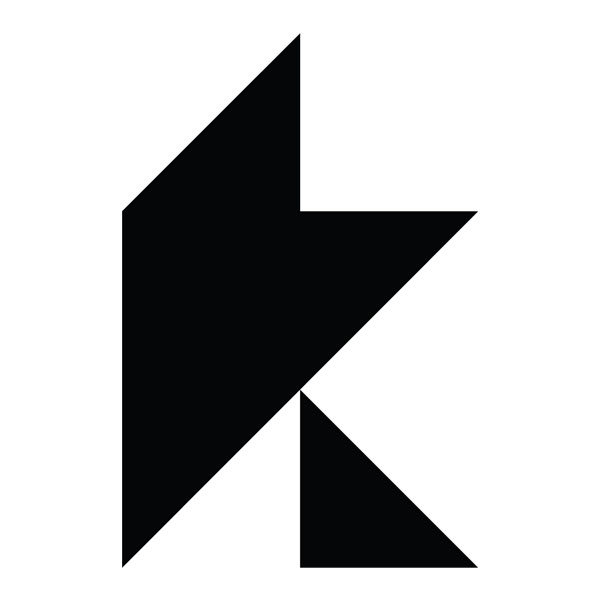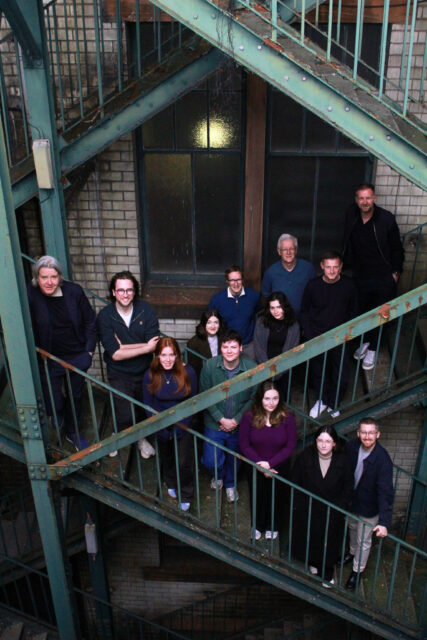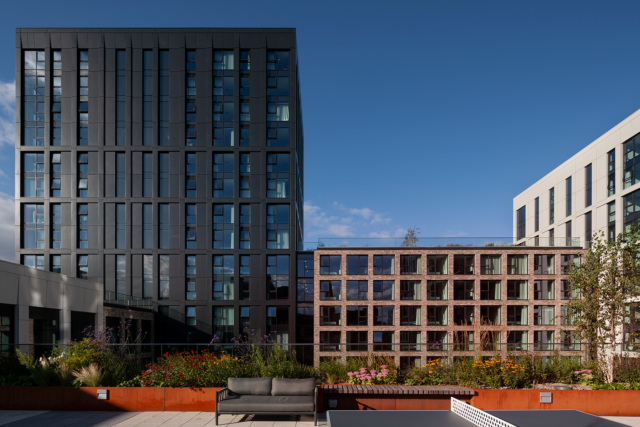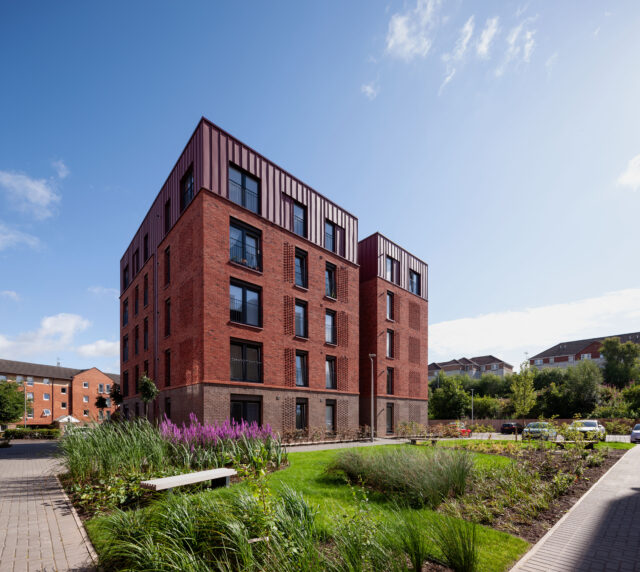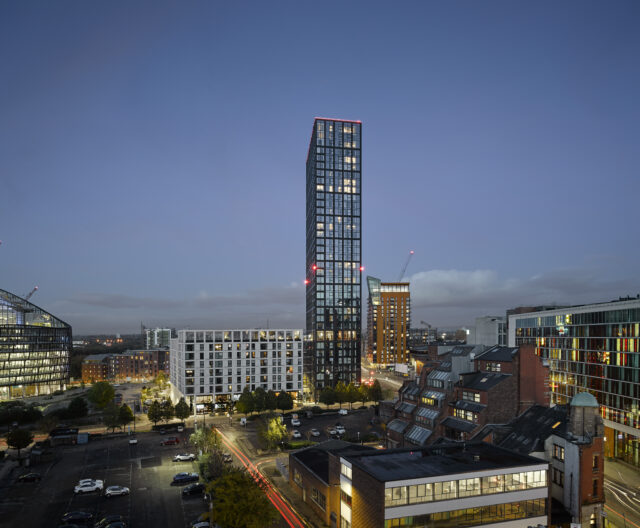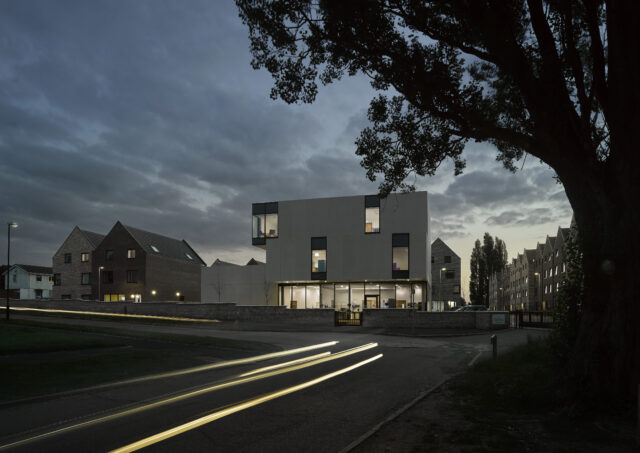HAUS Collective
Category
Architectural Practice of the Year
Company
HAUS
Summary
Creativity is not an occupation; it is a preoccupation. As architects, we are obsessed by ‘ideas’.
HAUS Collective is a Glasgow-based architecture and urban design studio actively delivering projects across the UK. We design the future while being sensitive to the past. We’re engaged in everything from town centre regeneration, city centre mixed-use development, conservation retrofit, regional headquarters, small-scale office fit-out, Passivhaus and the precious details of the private dwelling.
Notable projects include our award-winning high-density residential community, ‘Moda, Holland Park’ in Glasgow; the sensitive restoration and reuse of the former Napiershall Street School in Glasgow, introducing a more intimate residential neighbourhood to an already thriving community; and the completion of our 76,000 sq. ft Grade A office Greenmarket, Dundee, contributing to the wider regeneration of Dundee’s waterfront.
Our practice is built on meaningful collaboration with clients, end-users, and communities. We believe that great architecture is shaped by those who experience it daily. Our process is deeply rooted in dialogue and co-creation, ensuring that every project reflects the aspirations of its stakeholders while delivering functional, aesthetic, and experiential value.
We are a progressive architectural practice dedicated to delivering innovative, contextually responsive and socially meaningful design. Committed to pushing creative and technical boundaries, our work is programmatically, formally and spatially rich, designed to inspire and enhance the built environment.
As Architects, our approach is design-led, as consultants it is service-focused through our investment in people.
What sets your practice/agency apart from others?
Our culture!HAUS was established through the pursuit of ‘idea’, a desire to design and create, to learn and educate, influence and enjoy, a studio of innovation.
For innovation to become central to our approach we have created the space and environment where people feel free to unleash and discover their talents and passions and engage and interact in the hard work of innovative problem solving.
To foster this belief, we seek to encourage three primary capabilities:
1 Creative Abrasion: Ideas through debate and discourse. Amplifying differences through heated, yet constructive argument to create a portfolio of alternatives. Diversity and Creative Conflict!
2 Creative Agility: To test and refine ideas, quick pursuit, reflection and judgment. Design thinking through scientific and artistic processes.
3 Creative Resolution: Decision making that allows ‘decisions’ to arise not either or!
We aspire to create a studio with the sensibility of a ‘community’, breaking down hierarchy to allow anyone, regardless of experience or role, to offer comment and idea enriching our design process. We encourage the minority voices and the disruptors to speak up and be heard through co-creation.
Our goal is not to do business with everybody who needs what we have, nor hire people who just need a job; our goal is to invest in people who believe what we believe!
How do you go 'the extra mile' for clients and employees?
Our approach is people focused. As architects, we seek to deepen our commitment to both clients and employees by focusing on empathy, communication and long-term value.For our clients, it starts with us truly understanding their purpose, their ambition beyond and established project brief. We listen, we ask considered questions, and anticipate needs they haven’t expressed. We provide clear and engaging design direction early in the process and stay proactive in our communication. We are proactive throughout a project from inception to completion, guiding decisions and problem solving with attention and care. Beyond project completion, we remain active, checking in with clients, end users and the communities our buildings impact, offering post-occupancy support informing our commitment to continued learning and improvement.
For our employees, our culture is key, and creating a culture of growth, trust and inclusion. We invest in professional personal development, encouraging creative exploration, and personal and collective growth. We have created a culture that recognises the efforts, ‘wins’ however big or small, promoting a healthy work-life balance with flexibility and support. Our transparency in leadership builds trust, while involving team members in key discussions fosters ownership and motivation.
Ultimately, going the extra mile means treating every interaction as an opportunity to build lasting relationships by being thoughtful, responsive and committed to quality in every detail. Whether it's a client trusting us with their vision or a team member looking for purpose in their work, we focus on a consistency of small intentional efforts that present the greatest long-term impact.
What innovations have you introduced in the past year?
In addition to our ongoing commitment to sustainable design, and our accredited PassivHaus designers, over the past 12 months we have implemented ISO 14001, an international standard for environmental management systems (EMS).For a small architectural practice this has presented a powerful innovation enhancing our sustainability and business performance. By adopting ISO 14001, we have experienced gains through a structured approach to identifying and minimising our environmental impact, focused on areas such as energy use, material sourcing, waste management and design practices.
It has helped us embed sustainability into daily operations and design philosophies, aligning with growing client and regulatory expectations for greener buildings.
As a small practice, the innovation lies in the systemisation of what might otherwise be ad-hoc sustainability efforts. ISO 14001 has encouraged our continual improvement, clear documentation, and measurable environmental goals. Whilst the implementation has initially been resource-intensive, the long-term benefits are significant with operational efficiencies, reduced costs, and stronger brand identity. As climate concerns become central to architectural responsibility, ISO 14001 enables our practices to lead by example, innovating through responsible design and demonstrating genuine commitment to environmental stewardship. Ultimately, it’s not just about compliance, it’s a strategic tool for growth and meaningful impact.
Links
https://www.haus-collective.com/design/holland-park-glasgow/
https://www.haus-collective.com/design/greenmarket-dundee/
https://www.haus-collective.com/design/greenholme-street-glasgow/

